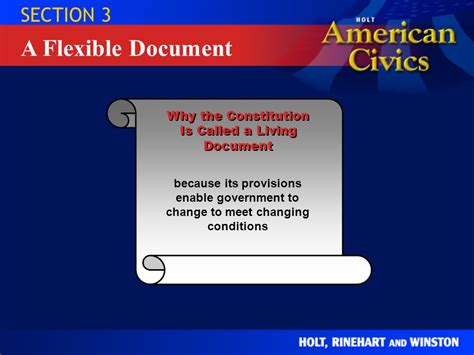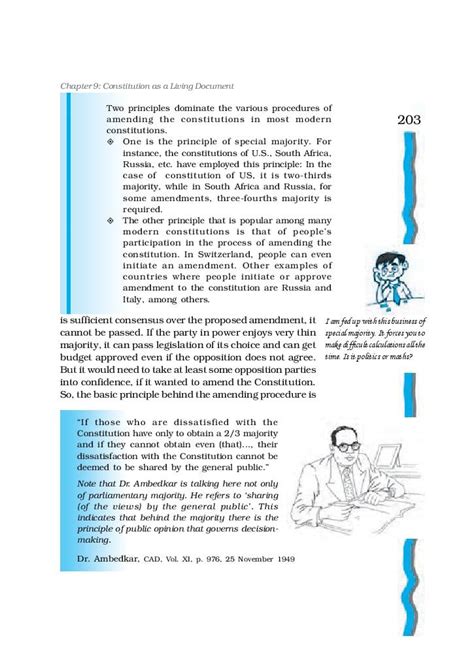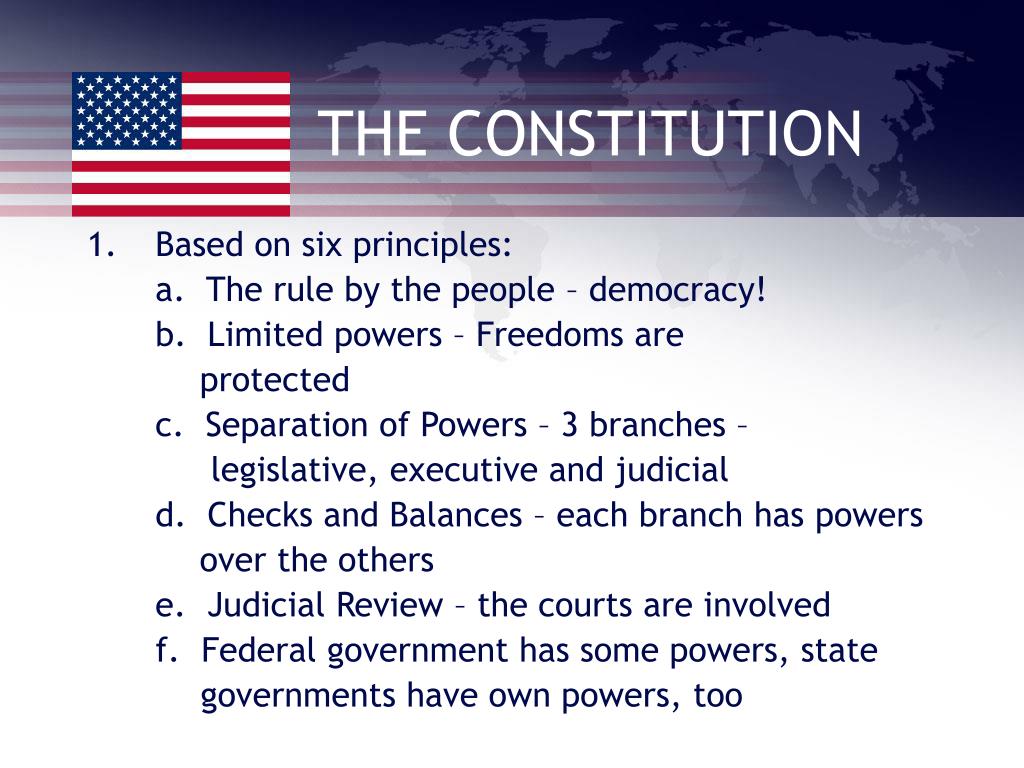Why Is The Constitution Called A Living Document

The United States Constitution is often referred to as a "living document" due to its unique ability to adapt and evolve with the changing needs and values of the American society. This concept is rooted in the idea that the Constitution is not a static, rigid framework, but rather a dynamic and flexible foundation for governance. The notion of a living document is not merely a figure of speech, but a fundamental principle that has been upheld by the Supreme Court and has played a crucial role in shaping the country's history.
The Origins of the Living Document Concept

The concept of the Constitution as a living document can be traced back to the early days of the American Republic. The Founding Fathers, who drafted the Constitution, intentionally left some provisions vague and open to interpretation, allowing for future generations to fill in the gaps. This approach was based on the understanding that the Constitution would need to adapt to the changing circumstances of the nation. As Chief Justice John Marshall noted in the landmark case of Mcculloch v. Maryland (1819), the Constitution is “intended to endure for ages to come” and must be interpreted in a way that allows it to “adapt to the various crises of human affairs.”
The Role of Judicial Interpretation
The Supreme Court has played a significant role in shaping the concept of the living document. Through its decisions, the Court has consistently demonstrated a willingness to reinterpret the Constitution in light of changing social, economic, and political conditions. This approach has allowed the Constitution to remain relevant and effective, even as the country has undergone significant transformations. For example, the Court’s decision in Brown v. Board of Education (1954) effectively overturned the “separate but equal” doctrine established in Plessy v. Ferguson (1896), marking a significant shift in the interpretation of the Equal Protection Clause of the 14th Amendment.
| Key Supreme Court Decisions | Year | Impact on Constitutional Interpretation |
|---|---|---|
| Mcculloch v. Maryland | 1819 | Established the principle of implied powers and the Supreme Court's role in interpreting the Constitution |
| Brown v. Board of Education | 1954 | Overturned the "separate but equal" doctrine and marked a significant shift in the interpretation of the Equal Protection Clause |
| Roe v. Wade | 1973 | Established a woman's right to abortion and highlighted the ongoing debate over the Constitution's protection of individual rights |

The Importance of Amendment and Revision

In addition to judicial interpretation, the Constitution also provides a formal process for amendment and revision. This process allows the document to be updated and refined in response to changing circumstances, ensuring that it remains a vibrant and relevant foundation for governance. The amendment process has been used numerous times throughout American history, with notable examples including the Bill of Rights (1791) and the 13th Amendment (1865), which abolished slavery.
The Impact of Social and Cultural Changes
Social and cultural changes have also played a significant role in shaping the living document concept. As American society has evolved, so too has the interpretation of the Constitution. The document’s provisions have been reinterpreted to reflect changing values and norms, such as the expansion of individual rights and the protection of minority groups. For example, the Civil Rights Act of 1964 and the Voting Rights Act of 1965 were landmark legislation that helped to enforce the equal protection guarantees of the 14th Amendment.
Key Points
- The Constitution is considered a living document due to its ability to adapt and evolve with changing societal needs and values.
- Judicial interpretation has played a significant role in shaping the concept of the living document, with the Supreme Court consistently reinterpreting the Constitution in light of changing circumstances.
- The amendment process has allowed the document to be updated and refined in response to changing circumstances, ensuring that it remains a vibrant and relevant foundation for governance.
- Social and cultural changes have also played a significant role in shaping the living document concept, with the interpretation of the Constitution reflecting changing values and norms.
- The living document concept is not without its challenges and criticisms, with some arguing that it allows the judiciary to overstep its authority and impose its own values on the Constitution.
In conclusion, the Constitution's status as a living document is a testament to its enduring relevance and flexibility. Through a combination of judicial interpretation, amendment, and revision, the document has been able to adapt to the changing needs and values of American society, ensuring that it remains a vibrant and effective foundation for governance.
What is the significance of the living document concept in American constitutional law?
+The living document concept allows the Constitution to adapt and evolve with changing societal needs and values, ensuring that it remains a relevant and effective foundation for governance.
How has the Supreme Court contributed to the development of the living document concept?
+The Supreme Court has played a significant role in shaping the concept of the living document through its decisions, which have consistently demonstrated a willingness to reinterpret the Constitution in light of changing social, economic, and political conditions.
What are some examples of how the living document concept has been applied in practice?
+Examples of the living document concept in practice include the Supreme Court’s decisions in Brown v. Board of Education (1954) and Roe v. Wade (1973), as well as the amendment process, which has allowed the document to be updated and refined in response to changing circumstances.



